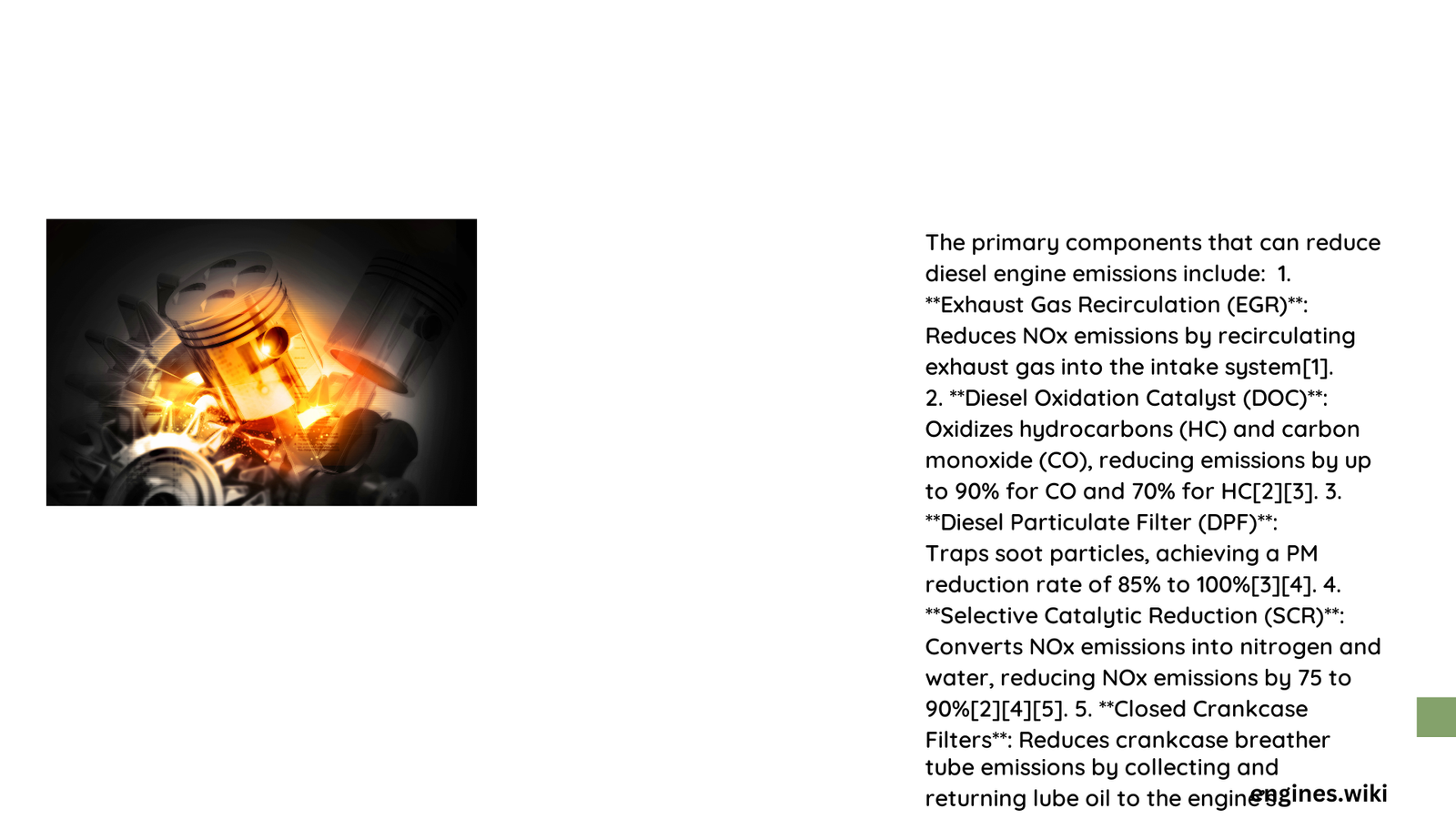Diesel engine emissions pose significant environmental challenges, requiring advanced technological solutions to minimize harmful pollutants. Modern diesel engines employ sophisticated aftertreatment systems that dramatically reduce nitrogen oxides (NOx), particulate matter (PM), carbon monoxide (CO), and hydrocarbon (HC) emissions through innovative components designed to transform and capture harmful exhaust gases before they enter the atmosphere.
What Are the Primary Components for Diesel Emission Reduction?
Diesel engines rely on multiple sophisticated technologies to minimize environmental impact. The primary components that effectively reduce emissions include:
- Diesel Particulate Filter (DPF)
- Selective Catalytic Reduction (SCR)
- Exhaust Gas Recirculation (EGR) System
- Diesel Oxidation Catalyst (DOC)
How Does Diesel Particulate Filter Work?
The Diesel Particulate Filter represents a critical technology in emission control, offering remarkable performance characteristics:
| Performance Metric | DPF Capability |
|---|---|
| Particulate Reduction | 85% – 100% |
| Regeneration Methods | Passive and Active |
| Typical Service Interval | Varies by driving conditions |
Key features of DPF include:
– Captures microscopic soot particles
– Uses ceramic or metallic filter elements
– Requires periodic regeneration to maintain efficiency
– Prevents harmful particulate matter from entering the atmosphere
What Role Does Selective Catalytic Reduction Play?
Selective Catalytic Reduction (SCR) represents a breakthrough in NOx emission control:
- Converts nitrogen oxides into harmless nitrogen and water
- Uses Diesel Exhaust Fluid (DEF) for chemical transformation
- Achieves up to 90% NOx reduction
- Operates effectively across various engine loads and temperatures
How Does Exhaust Gas Recirculation Minimize Emissions?
The EGR system provides a sophisticated approach to reducing nitrogen oxide formation:
- Recirculates a portion of exhaust gases back into the engine
- Lowers combustion temperatures
- Reduces NOx formation through oxygen displacement
- Available in high-pressure and low-pressure configurations
What Capabilities Does Diesel Oxidation Catalyst Provide?
Diesel Oxidation Catalyst serves as the initial stage of emission control:
- Converts hydrocarbons and carbon monoxide into less harmful compounds
- Achieves up to 90% conversion efficiency
- Operates optimally at temperatures between 400-900°F
- Supports regeneration processes for other emission control components
Technical Considerations for Emission Reduction

Implementing these technologies requires careful engineering and maintenance:
– Precise temperature management
– Regular system diagnostics
– Understanding specific driving conditions
– Continuous technological refinement
Performance and Environmental Impact
The combined effect of these components results in:
– Significant reduction of harmful emissions
– Improved air quality
– Enhanced engine efficiency
– Compliance with stringent environmental regulations
Future Outlook
Ongoing research continues to improve emission reduction technologies, focusing on:
– More efficient catalyst materials
– Enhanced regeneration techniques
– Lower environmental footprint
– Increased system durability
Conclusion
Modern diesel engines leverage sophisticated technological solutions to minimize environmental impact, demonstrating remarkable progress in emission control strategies.
